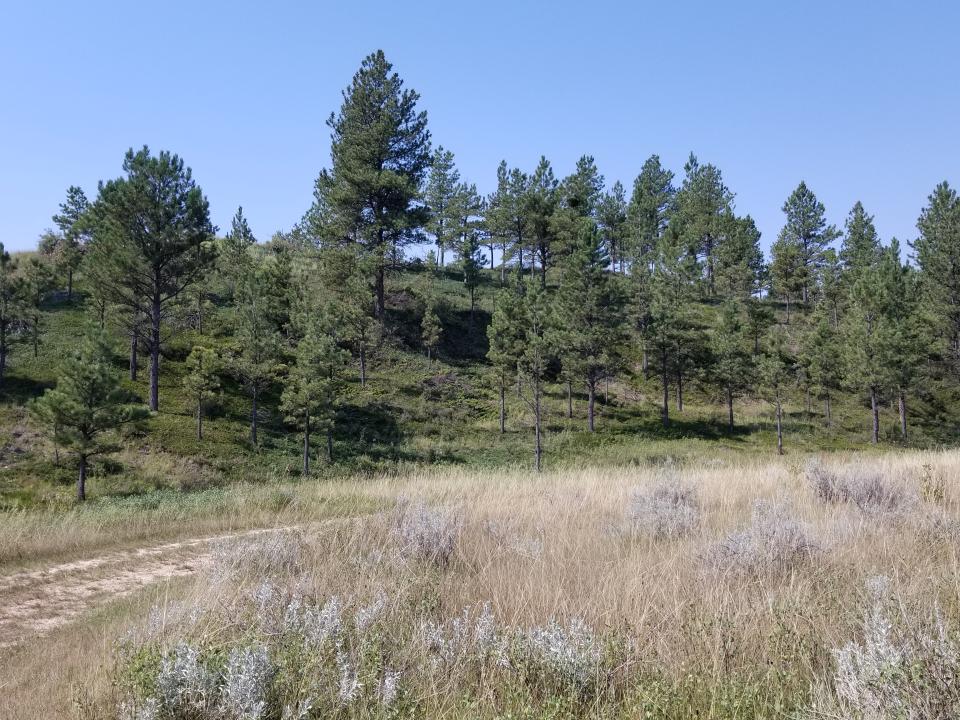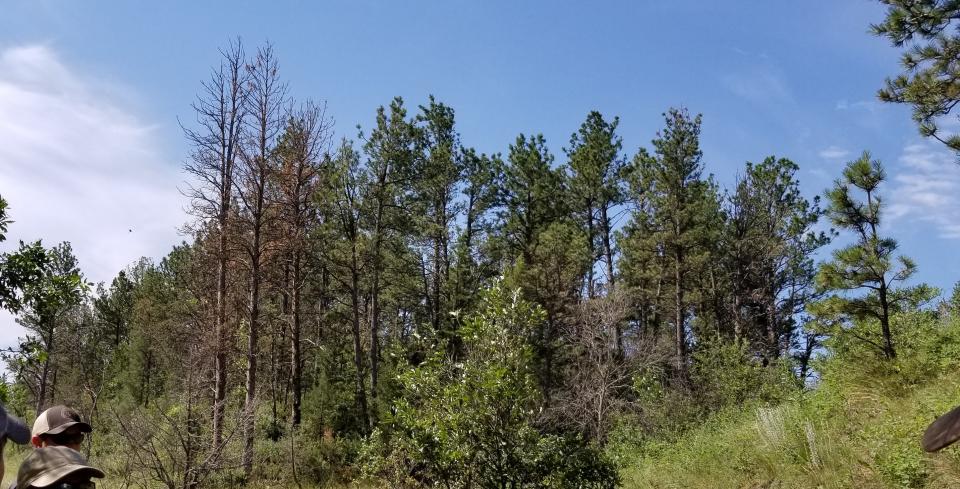GNA Spotlight - North Dakota, September 2024

The North Dakota Forest Service (NDFS) and the Dakota Prairie Grassland (DPG) Woodlands & Grasslands Sustainability Good Neighbor Authority (GNA) Agreement provides a framework for the cooperative effort to perform forest, rangeland, and watershed restoration services on and off National Forest System (NFS) lands. The agreement covers the entirety of the DPG, and the first project underway is fuels reduction within the 7000-acre ponderosa pine stand located on mixed ownership in Slope County.
The federal funds provided for the GNA agreement are important because the trees are unmerchantable and the stands are unmanaged, overcrowded, and vulnerable to wildfire and forest health issues. This is the only stand of ponderosa pine in North Dakota. The agreement specifies that the state will provide crews to conduct fuels reduction activities which may include mechanical thinning, pruning, piling, and burning of ponderosa pine, plus seedling replanting, reseeding and noxious weed treatment in the project area. Mechanical treatment of juniper encroachment may also be included.
In 2004, several hundred acres of the pines burned in the Deep Creek Fire, and few seed trees remained to regenerate these acres. At the invitation of private landowners and with USDA Forest Service funding, NDFS seasonal fire crews began hazardous fuels reduction work on private land surrounding DPG near Amidon in 2005. This work helped the state develop, train, and maintain wildland fire crews.
Upon seeing the results of forest thinning on their own lands, landowners expressed support for cross-boundary work on the DPG. This came to fruition in 2017 with GNA. In support of these efforts, NDFS conducts forest health surveys in the pines annually with support provided by USDA Animal & Plant Heath Inspection Service, USDA Forest Service, North Dakota Department of Agriculture, and North Dakota State University. The outcome is a more resilient ponderosa pine forest, improved landowner and agency communication and collaboration, and opportunities for additional cooperative efforts to improve the resilience of natural resources. Landowners see a more open forest for grazing. Agencies see a more open forest that is healthier and less vulnerable to wildfire.
To learn more, contact Lezlee Johnson, Forestry & Fire Management Team Leader.
